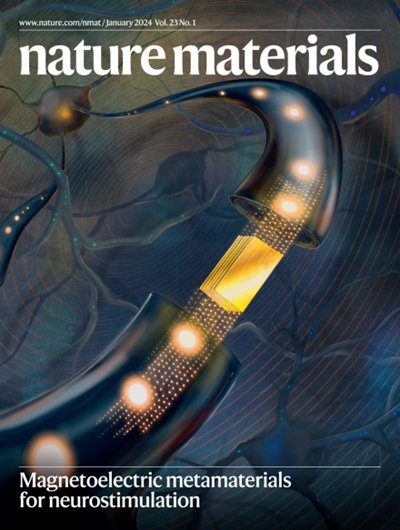Frozen non-equilibrium dynamics of exciton Mott insulators in moiré superlattices
IF 37.2
1区 材料科学
Q1 CHEMISTRY, PHYSICAL
引用次数: 0
Abstract
Moiré superlattices, such as those formed from transition metal dichalcogenide heterostructures, have emerged as an exciting platform for exploring quantum many-body physics. They have the potential to serve as solid-state analogues to ultracold gases for quantum simulations. A key open question is the coherence and dynamics of the quantum phases arising from photoexcited moiré excitons, particularly amid dissipation. Here we use transient photoluminescence and ultrafast reflectance microscopy to image non-equilibrium exciton phase transitions. Counterintuitively, experimental results and theoretical simulations indicate that strong long-range dipolar repulsion freezes the motion of the Mott insulator phase for over 70 ns. In mixed electron–exciton lattices, reduced dipolar interactions lead to diminished freezing dynamics. These findings challenge the prevailing notion that repulsion disperses particles, whereas attraction binds them. The observed phenomenon of frozen dynamics due to strong repulsive interactions is characteristic of highly coherent systems, a feature previously realized exclusively in ultracold gases. The authors image non-equilibrium exciton phase-transition dynamics in moiré superlattices, revealing how strong long-range dipolar repulsion freezes the motion of the Mott insulator over a timescale of tens of nanoseconds.


moir超晶格中激子莫特绝缘子的冻结非平衡动力学
moir超晶格,例如由过渡金属二硫系异质结构形成的超晶格,已经成为探索量子多体物理的一个令人兴奋的平台。它们有潜力作为量子模拟中超冷气体的固态类似物。一个关键的开放问题是由光激发的莫尔激子,特别是在耗散中产生的量子相的相干性和动力学。在这里,我们使用瞬态光致发光和超快反射显微镜来成像非平衡激子相变。与直觉相反,实验结果和理论模拟表明,强烈的远距离偶极排斥使莫特绝缘体相的运动冻结超过70 ns。在混合电子-激子晶格中,偶极相互作用的减少导致冻结动力学的减弱。这些发现挑战了普遍的观点,即斥力使粒子分散,而引力使它们结合。由于强排斥相互作用而观察到的冻结动力学现象是高度相干系统的特征,这一特征以前只在超冷气体中实现。
本文章由计算机程序翻译,如有差异,请以英文原文为准。
求助全文
约1分钟内获得全文
求助全文
来源期刊

Nature Materials
工程技术-材料科学:综合
CiteScore
62.20
自引率
0.70%
发文量
221
审稿时长
3.2 months
期刊介绍:
Nature Materials is a monthly multi-disciplinary journal aimed at bringing together cutting-edge research across the entire spectrum of materials science and engineering. It covers all applied and fundamental aspects of the synthesis/processing, structure/composition, properties, and performance of materials. The journal recognizes that materials research has an increasing impact on classical disciplines such as physics, chemistry, and biology.
Additionally, Nature Materials provides a forum for the development of a common identity among materials scientists and encourages interdisciplinary collaboration. It takes an integrated and balanced approach to all areas of materials research, fostering the exchange of ideas between scientists involved in different disciplines.
Nature Materials is an invaluable resource for scientists in academia and industry who are active in discovering and developing materials and materials-related concepts. It offers engaging and informative papers of exceptional significance and quality, with the aim of influencing the development of society in the future.
 求助内容:
求助内容: 应助结果提醒方式:
应助结果提醒方式:


